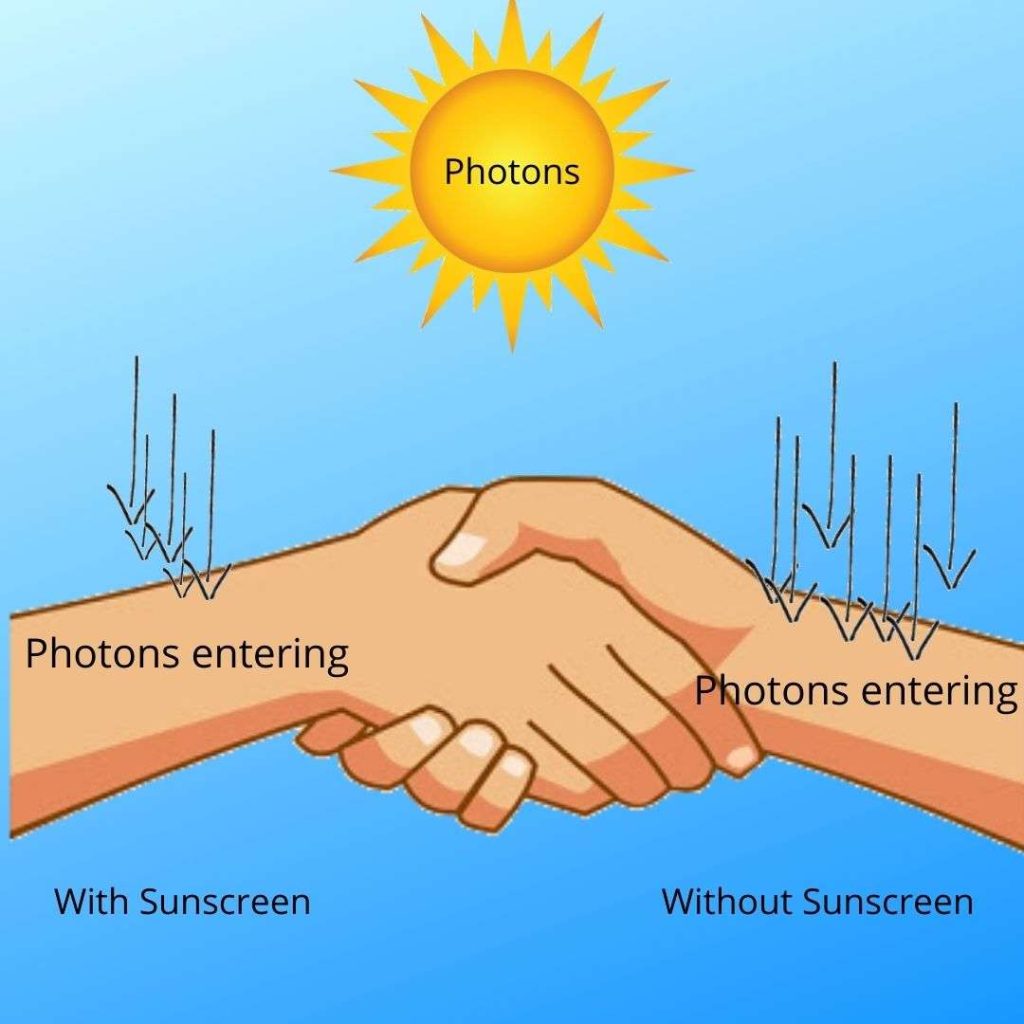‘Ah, I forgot to wear sunscreen’. After spending hours out in the sun, you come home with tanned skin. And, that’s not what you’ve wanted. What if you’ve applied sunscreen? Won’t you get tanned? Does sunscreen prevent tanning? In this blog, we’ve answered all these questions.
Wearing sunscreen is the cardinal rule of skincare. Getting out for some serious lounging by the beach can give you some Vitamin D. But, UV rays from the sun can have damaging effects on the skin. Not only they will cause tanning but will also lead to skin cancer. Therefore, if you’re planning to bask out in the sun for hours, slather sunscreen on the exposed body parts before stepping out.
Does Sunscreen Prevent Tanning?
Sunscreen does prevent tanning. But, it cannot give you complete protection. You can still have tanning while wearing sunscreen. These factors play an important role.
a) No sunscreen can block 100% of UV rays.
b) Not applying a sufficient amount of sunscreen.
c) Your sunscreen prevents the UV rays only for a certain period. Reapplying it frequently enough is vital for long-term protection.
d) The SPF of the sunscreen you’re using cannot give you adequate UV protection.
To understand all the mechanisms of sunscreen’s functions, know what is tanning.
What is Tanning?
An increase of melanin due to sun exposure is called Tanning. This is a natural defense mechanism of the skin to safeguard it from the harmful UV rays of the sun. Some of the tan-prone areas of the body are the face, arms, back, hands, and legs.
Your body starts to tan when UV rays reaches skin cells. A pigment known as melanin is released. The more the melanin is released, the more the tan. Initially, your skin color will turn red. Then, it will dilate blood vessels to kickstart repairing the damages.
How Sunscreen Works to Prevent Tanning?
Sunscreen works in two different ways.
1. Sunscreens having chemicals absorbs UV rays. They, then, alter these rays to lessen their skin-damaging effects. Two examples of chemical-based sunscreens are octisalate and oxybenzone.
2. Physical sunscreens contain zinc or titanium oxides. These active ingredients sit on the uppermost layer of your skin to reflect and scatter the harmful UV rays. As a result, your skin gets less damaged.
Sun emits both UVA and UVB rays. Whereas UVA rays can cause skin cancers and burns, UVB rays can lead to age spots, wrinkles, and burns. Therefore, choose a broad-spectrum sunscreen to stay protected from UVA as well as UVB rays.
Here’re some of the benefits you can enjoy wearing sunscreen daily.
Sunscreens are designed to filter UV rays but they’re not effective to stop melanin production. It means your skin will tan. But, the question is how much. And, that’s what we’ve covered in our next section.
Do You Tan More With Or Without Sunscreen?
Obviously, you’ll tan more without slapping on sunscreen.
Sunscreen reduces your ability to tan. As already said, your skin color will become dark to a certain extent even with sunscreen on. The image given below will give you a clear idea.

Slapping on sunscreen limits the number of photons entering your skin. That being said, the damage is minimized. Though tanning sometimes looks good. But, it’s definitely not good for your skin.
Should You Apply Sunscreen Even After the Peak Tanning Hours?
The peak tanning hours are between 10 a.m. to 2 p.m. During these hours, the sun remains directly overhead. So, you shouldn’t skip applying sunscreen while stepping out in these hours.
However, dermatologists believe that tanning after these hours also isn’t safe. It’s true that UVB rays responsible for skin cancers and burns don’t remain active during these hours. But, what about the UVA rays? The UVA rays contributing to aging remains constant all day.
According to the dermatologist, Doris Day, sunburns can be observed during cloudy days too. As the clouds block the infra-red rays, the temperature doesn’t soar high. However, the clouds cannot block the UV rays. Hence, you should wear sunscreen even on cloudy days and after and before the peak hours.
When and How Often Should You Apply Sunscreen?
All sunscreens need some time to start their work. Therefore, the Skin Cancer Foundation recommends applying sunscreen 30 minutes before going out. Using sunscreen even while staying indoors can add to the glowing of your skin. Regardless of season and weather, apply sunscreen every day without a miss.
The SPF of sunscreen remains active only for two hours after it penetrates your skin. Reapply it after every two hours. Additionally, slather on sunscreen immediately after sweating and swimming to reap the maximum benefits.
The AAD recommends enough sunscreen to fill a shot glass. Make sure you’re using sufficient quantity to cover the exposed body parts. In case, you’re confused, consider this guideline before you apply sunscreen.

Image: Source
Do Dark-Skinned People Need Sunscreen?
Ranella Hirsch, the past president of the American Society of the Cosmetic Dermatology and Aesthetic Surgery, and a Boston dermatologist says dark-skinned people should also apply sunscreen. A CDC report showed that 30% of darker-skinned ethnic groups have reported having one sunburn minimum the last year. Dark-skinned people think they’re free from the risk of skin cancer. So, they avoid sunscreen. Consequently, skin cancer often progressed to a later stage among these people and the treatment becomes more challenging. Sometimes, dark-skinned people have genes that make them susceptible to skin cancer. Therefore, it’s better to apply sunscreen to stay safe.
Wrapping Up
a) Sunscreen prevents tanning but up to a certain degree.
b) Tanning harms the skin. You’ll get more tanned without wearing sunscreen.
c) Choose a broad-spectrum sunscreen to stay protected from both UVA and UVB rays.
d) Apply sunscreen 30minutes before going out in the sun.
e) Reapply sunscreen after every two hours to get maximum protection
f) Use sunscreen even while indoors and in cloudy days too.
d) Don’t skip sunscreen even if you’ve dark skin.
Related Articles

How to Choose the Right Sunscreen Based on Your Skin Type?

What SPF Should I Use? Does SPF Matter?







